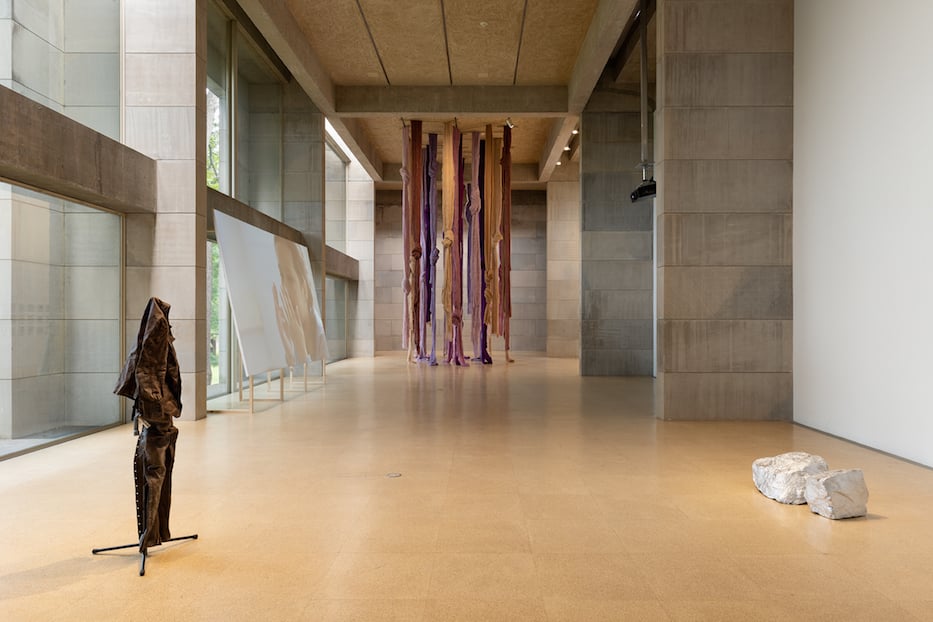
Arts & Culture | Visual Arts | Education | University of New Haven
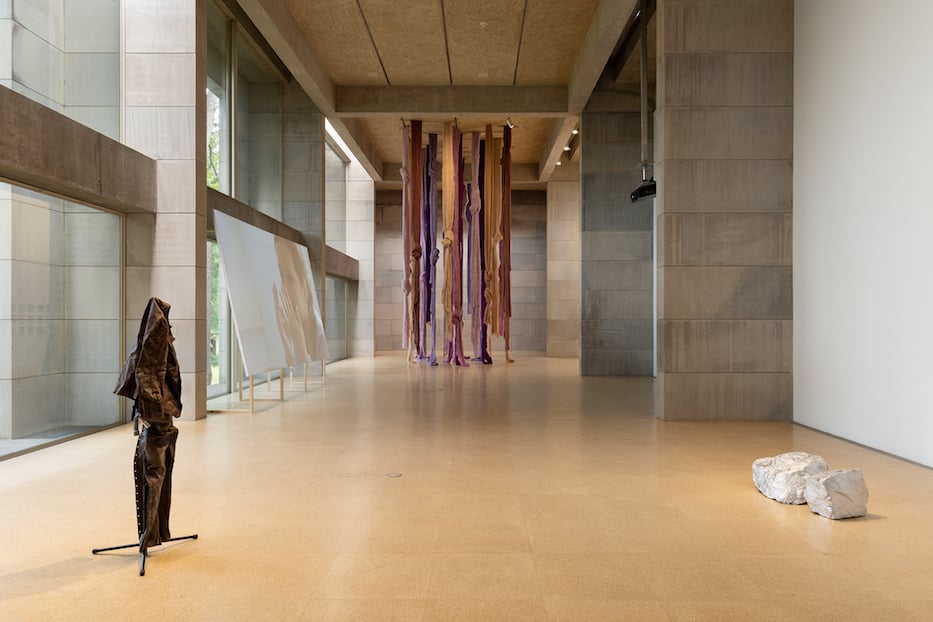
Charles Benton Photos.
Is this part of the show or did someone leave their ginger root out to grow in the sun?
The Language in Common, now running at the Ezra and Cecile Zilkha Gallery in Middletown through Dec. 12, attempts to answer this question. Whether it succeeds is up for debate.
The Language In Common begins with the idea that collective memory is accessible to all through artistic practices. Curator Benjamin Chaffee brings five international and intergenerational artists together, proposing that a common language can, and in fact does, live between art forms.
As the viewer walks through the uncrowded Zilkha Gallery, they are invited to access a new imaginary through poetry, music, visual art, and performance. The collation of media and disciplines offer space for conversation about heritage, colonialism and unsolvable questions.
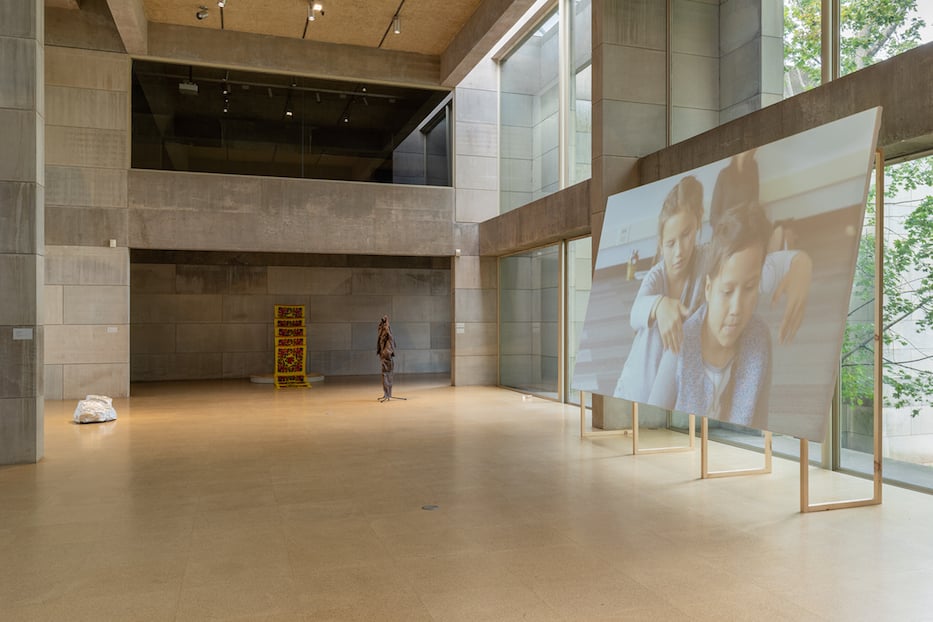
Charles Benton Photos.
Entering the gallery, a viewer can either take a right to the main chamber or walk straight through a small, enclosed bridge to an alcove. The limestone walls and the cork floor cool the gallery, and the large glass windows of the main room light up the space gently. Descriptive and biographic labels are strategically placed to not distract from the work.
The first piece a viewer encounters is Tanya Lukin Linklater’s Breastbone to sunrise, a series of cascading floral scarves that lead the viewer to the open floor of the main room. Around it, three found objects by Jasper Marsalis—a ginger root in a plastic storage container, a spray painted rock and a leather suit behind a microphone stand—ostensibly critique Black spectacle.
Marsalis, a 25-year-old contemporary artist who also performs as Slauson Malone, posits that Blackness is often up for consumption in media and pop-culture. With his work, Marsalis explores the contemporary Black identity and the impossibility of a truly free existence.
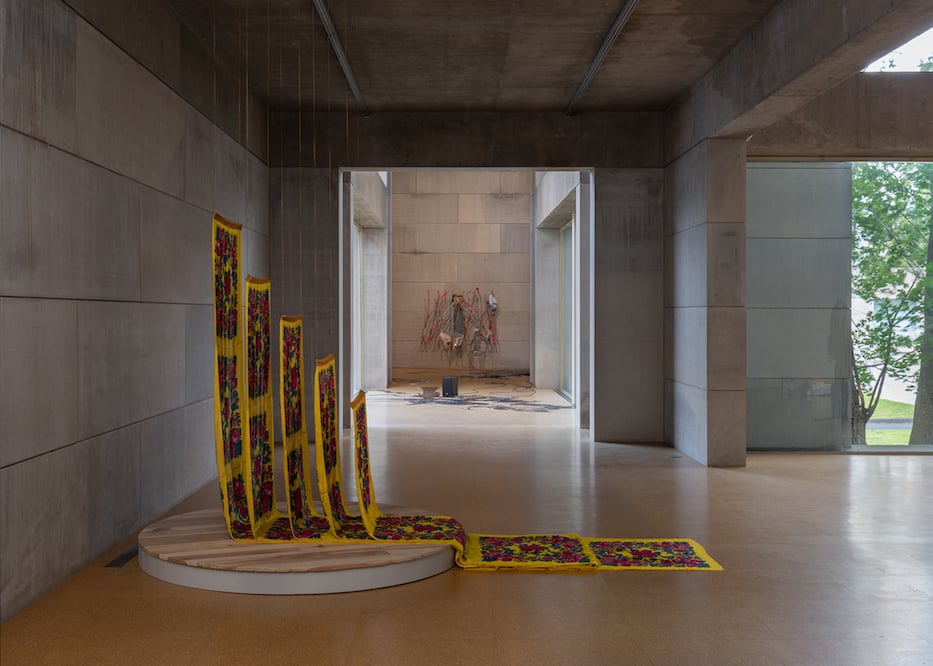
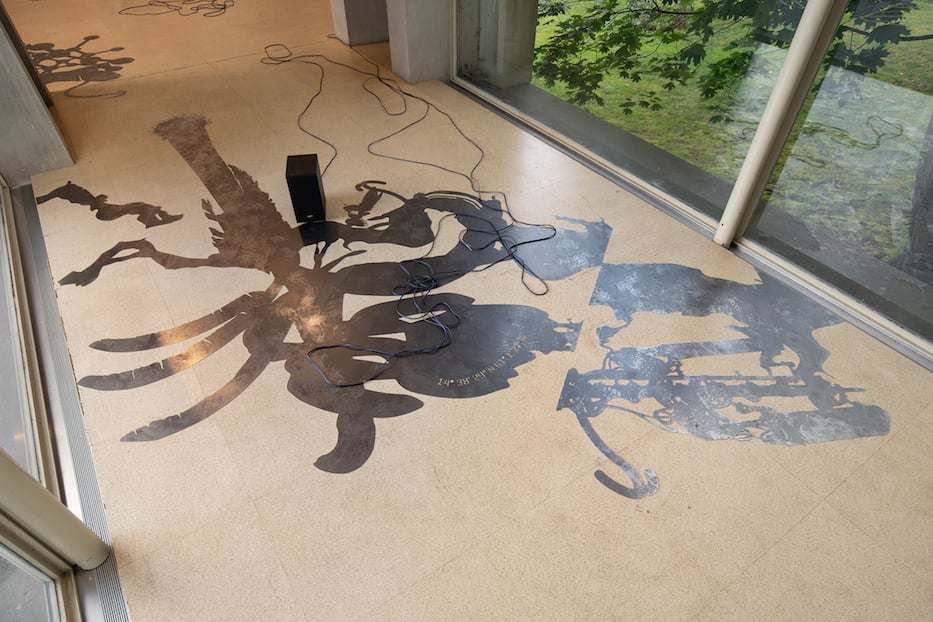
Charles Benton Photos.
Centered along the large windows that line one side of the gallery is a video by Linklater. An installation by Cecilia Vicuña that presents a 500-year-old Indigenous language form, and a series of meditative drawings by poet Alice Notley fill the rest of the chamber. Together, they all come together as vehicles for a language that existed before we were born.
Marsalis’ spray-painted rock, Vicuña’s installation with un-spun wool, and the rest of the work create a unique space that is full of texture—a significant component of the viewer’s experience.
If there is one piece that feels out of place, it is Linklater’s video in the center of the main chamber of the gallery. The 12-minute-and-21-seconds of footage documents a group of Indigenous children dancing and performing Indigenous rituals in modern America. Conceptually, the film feels very relevant. Similar to the other work in this exhibition, portions of the video depict unconventional forms of communication.
Yet, the work is poorly displayed at the Zilkha gallery. The projection screen feels detached from the earthy quality of the rest of work. Even though the video is muted on purpose, the screen feels out of place, making Linklater’s choice come across as not deliberate.
Directly to the right of Linklater’s video is Cecilia Vicuña installation, the star of the show. Quipu Viscera is composed of large pillars of un-spun wool dyed in different shades of browns, pinks and purples. It hangs from the high ceilings of the space. The size of the work is commanding, but what really makes the installation special is the experience of walking through the forest of wool.
Surrounded by natural fibers, the viewer is wrapped up by the warmth and charm of the monumental installation. Quipu references an Indigenous Inca practice once banned by colonial rule in which cords are knotted as a means of storytelling and record-keeping. With this “quipoem,” Vicuña channels restoration after the disaster of Hurricane Katrina.
Walking through the main chamber of the gallery, this viewer almost overlooked Julien Creuzet’s work in the adjacent smaller room. Although the layout of the gallery can disrupt the flow of the viewing experience in this way, Creuzet’s work is commanding in its emotional charge.
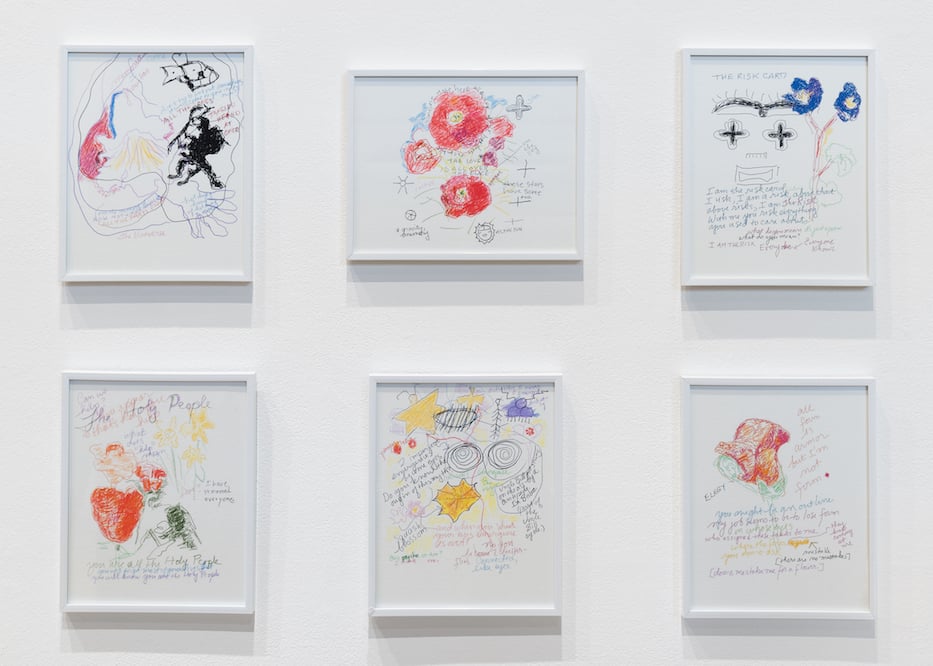
Charles Benton Photos.
The second room, over the bridge, houses a different experience, one that is more up front and unreserved about how capitalism and colonialism have affected Native people. Flat sheets of steel that have been cut into organic shapes and adorned with cut-out motifs of pesticides, banana plants, and maps, doodle the floor of the short bridge. The trail of steel leads the viewer to a mixed-media wall-mounted sculpture. The slithering streams of solid steel alert the viewer of the violent energy of the rope, plastic, wire, string and fabric of the wall-mounted piece.
A poem accompanies the work and an ominous, soft soundtrack composed by the artist also plays in the background. With his installation, Creuzet aims to bring to light a contemporary health crisis in Martinique. He uses his “floor drawings'' to link American imperialism and French colonial rule to elevated levels of prostate, pancreatic, and stomach cancer caused by the chemical compound Chlordecone found in American-made pesticides.
The most interesting thing about this show is that it almost feels like the artwork made by the five international artists are having a conversation amongst themselves. Even though the works in question address different struggles, the viewer is witness to a fruitful intercultural communication about hegemony and introspection—a welcome contrast to the predominately white institution where it is housed and the largely white state where it is installed.
This piece comes to us through a collaboration with UNH Professor Jacquelyn Gleisner, who is also a contributor to the Arts Paper, and students in her class Arts 3301, Writing for Designers. David A. Rodriguez is a senior at the university.

